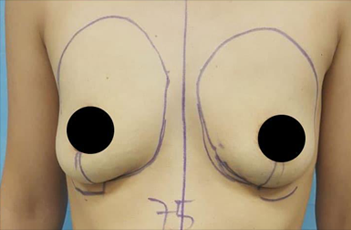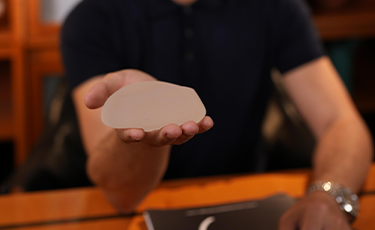
Breast Augmentation Surgery for Fuller and Shapelier Breasts
Breast augmentation surgery is an aesthetic surgical procedure performed to increase breast size and achieve a fuller appearance. This operation is generally preferred by individuals who experience sagging or deformities in the breast area due to breastfeeding, excessive weight loss, aging, or other conditions.
What is Breast Augmentation Aesthetics?
Breast augmentation aesthetics is a type of operation performed within the field of aesthetic surgery for individuals with insufficient breast volume, those who have experienced changes in breast tissue form, or those who desire a larger aesthetic appearance.
Breast volume may also decrease after natural processes such as pregnancy, breastfeeding, or aging. Breast augmentation aesthetics can help women feel more confident and attractive.
How is Breast Augmentation Surgery Performed?
For breast augmentation surgery, the size of the silicone (prosthesis/implant) to be placed inside the breast is determined according to the patient’s anatomical features and preferences. The incision site for implant placement is also decided; options may include the inframammary fold, around the areola, or the armpit area. Small incisions are made in the chosen area, and the implant is placed under the breast tissue, either in the subglandular (above the muscle) or submuscular (below the muscle) plane.
Breast augmentation surgeries are surgical procedures usually performed under general anesthesia. In general, breast augmentation surgery consists of the stages of anesthesia, incision, implant placement, and closure of the incisions.
In Which Cases are Breast Implants Applied?
Breast augmentation surgery is an aesthetic surgical procedure performed to enlarge the breast size and achieve a fuller look. It is usually chosen by women who experience sagging or deformities due to breastfeeding, significant weight loss, aging, or other conditions.
Additionally, breast augmentation may be performed for patients who have lost breast tissue due to illness or trauma. It may also be preferred for aesthetic purposes to correct asymmetry caused by uneven breast sizes or to improve self-confidence for women with naturally small breasts. Furthermore, breast augmentation can be performed as part of gender affirmation procedures.
It is an aesthetic procedure performed according to the patient’s preferences. The decision to undergo the surgery depends entirely on the individual’s needs and desires. However, it is important that implant selection be planned according to the patient’s anatomical measurements.
What Types of Implants are Used in Breast Augmentation?
The most common implants used in breast augmentation surgeries are silicone gel implants or saline-filled implants. These implants come in various shapes, sizes, textures, and levels of fullness, and are chosen according to the patient’s needs and preferences. They may be placed either under the breast tissue or beneath the chest muscle.
Silicone implants typically provide a softer texture and a more natural appearance. Saline-filled implants are less dense, giving them a firmer texture and making them less natural in appearance. However, both types are FDA-approved and can maintain results for many years. Since 1963, silicone implants have been the most commonly used material, and technological advances have eliminated earlier problems such as rupture, leakage, or deformation.
Less commonly used alternative implants include fluid-filled balloons, polyurethane-coated implants, and sterile saline cushions.
The choice of implant depends on factors such as the patient’s breast size, shape, skin elasticity, age, and overall health.
Can Breast Augmentation be Performed with Fat Injections Instead of Fillers?
Yes, breast augmentation can also be performed using fat injections. In this method, excess fat from another area of the body is injected into the breast. This procedure is also known as “lipoinjection” or “fat grafting.”
This method may be suitable for patients who desire a small to moderate increase in breast size. Compared to fillers, fat injections may yield more permanent results, as the transplanted fat cells integrate into the breast tissue. However, not every patient is suitable for this procedure, as it depends on the availability of sufficient fat reserves in the body.
While fat injection breast augmentation is less invasive than implant surgery, its results are more limited. Additionally, some of the injected fat cells may not survive, leading to variable outcomes. Often, more than one session is required to achieve the desired results.
Most patients requesting breast augmentation are slimmer, making it difficult to find sufficient fat for transfer. Therefore, this option is not always viable.
It is recommended to consult with a plastic surgeon to determine whether this method is suitable for you.
Are Breast Implants Permanent?
The silicone implants used in breast augmentation surgeries are generally durable and long-lasting, but they are not considered permanent. Over time, implants may wear out or degrade.
Silicone implants are made of high-quality materials designed to last many years. They are coated with a sealed outer shell that prevents leakage of the gel inside. For this reason, leakage or tissue damage is rare.
However, implants may typically begin to wear out or degrade after 10–15 years. This may lead to changes in size or shape, or in rare cases, rupture. In such situations, replacement surgery is usually required.
The longevity of implants depends on their material quality, proper placement, and regular follow-up. For detailed information, consultation with a plastic surgeon is recommended.
Who is Suitable for Breast Augmentation Surgery?
Suitable candidates generally include:
– Breast size: Individuals dissatisfied with breast size or shape, affecting body proportions or confidence.
– Breast deformities: Patients with congenital or age-related deformities.
– Post-breast cancer: Patients who have undergone surgery or radiation and have volume loss.
– Post-pregnancy and breastfeeding: Patients with breast size or shape changes.
– Body weight: Overweight or obese individuals are not suitable; they must first reach a healthier weight.
– Health condition: Candidates must generally be healthy.
A consultation with a plastic surgeon is necessary to determine eligibility and to discuss the process.
How Should You Prepare for Breast Augmentation Surgery?
Proper preparation is essential for safety and success. Steps include:
– Consultation: Meet with your plastic surgeon.
– Preoperative tests: Blood tests, EKG, or X-rays may be required.
– Medications: Stop blood-thinning drugs or supplements before surgery.
– Quit smoking: Smoking negatively affects healing.
– Diet: Follow a healthy diet and hydration routine.
– Arrange help: Assistance is needed postoperatively for daily tasks.
Following your surgeon’s advice is critical for success.
What Problems May Occur After Breast Augmentation Surgery?
– Pain: Mild to moderate discomfort, usually controlled with painkillers.
– Bruising and swelling: Common but temporary.
– Scars: Small, discreet scars that fade over time.
– Infection: Rare, minimized by modern techniques.
– Asymmetry: Can occur if implants settle differently.
– Numbness: Temporary loss of sensation in nipples or breast tissue.
Most side effects are mild and temporary. Patients are monitored after surgery and given aftercare instructions.
FREQUENTLY ASKED QUESTIONS
A personalized plan is created based on the patient’s anatomy, skin quality, and expectations. Costs may vary, especially if combined with other procedures such as a breast lift.
To learn about updated 2025 breast augmentation prices and personalized treatment options, you may contact our clinic and request a free consultation.
About the Author
Prof. Dr. Osman Kelahmetoğlu
Specialist in Plastic, Reconstructive, and Aesthetic Surgery
This article was prepared by Prof. Dr. Osman Kelahmetoğlu based on scientific sources and clinical experience. You may contact us for more information or to schedule an appointment.
Contact: iletisim@osmankelahmetoglu.com – 0 (533) 351 76 37


